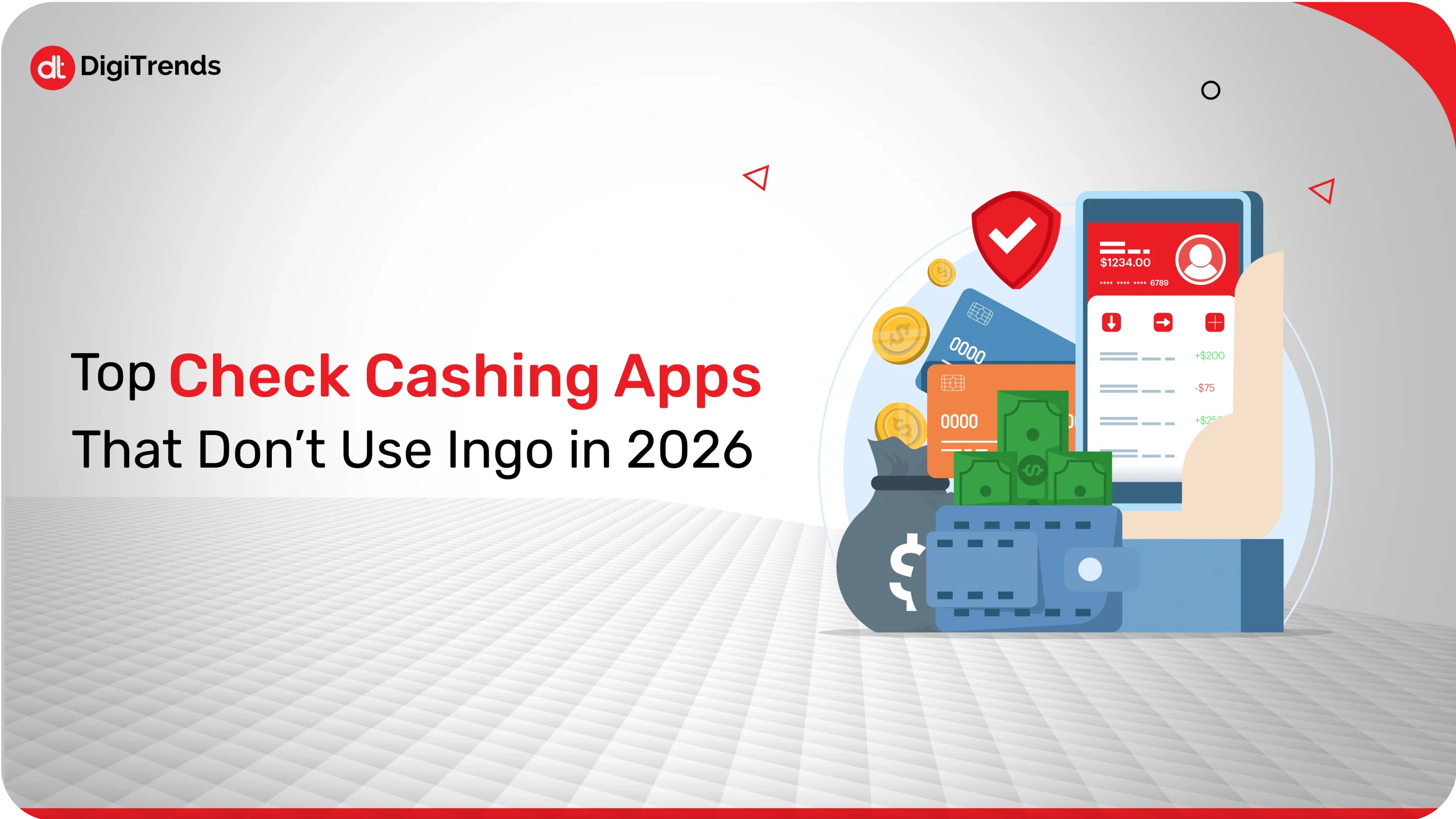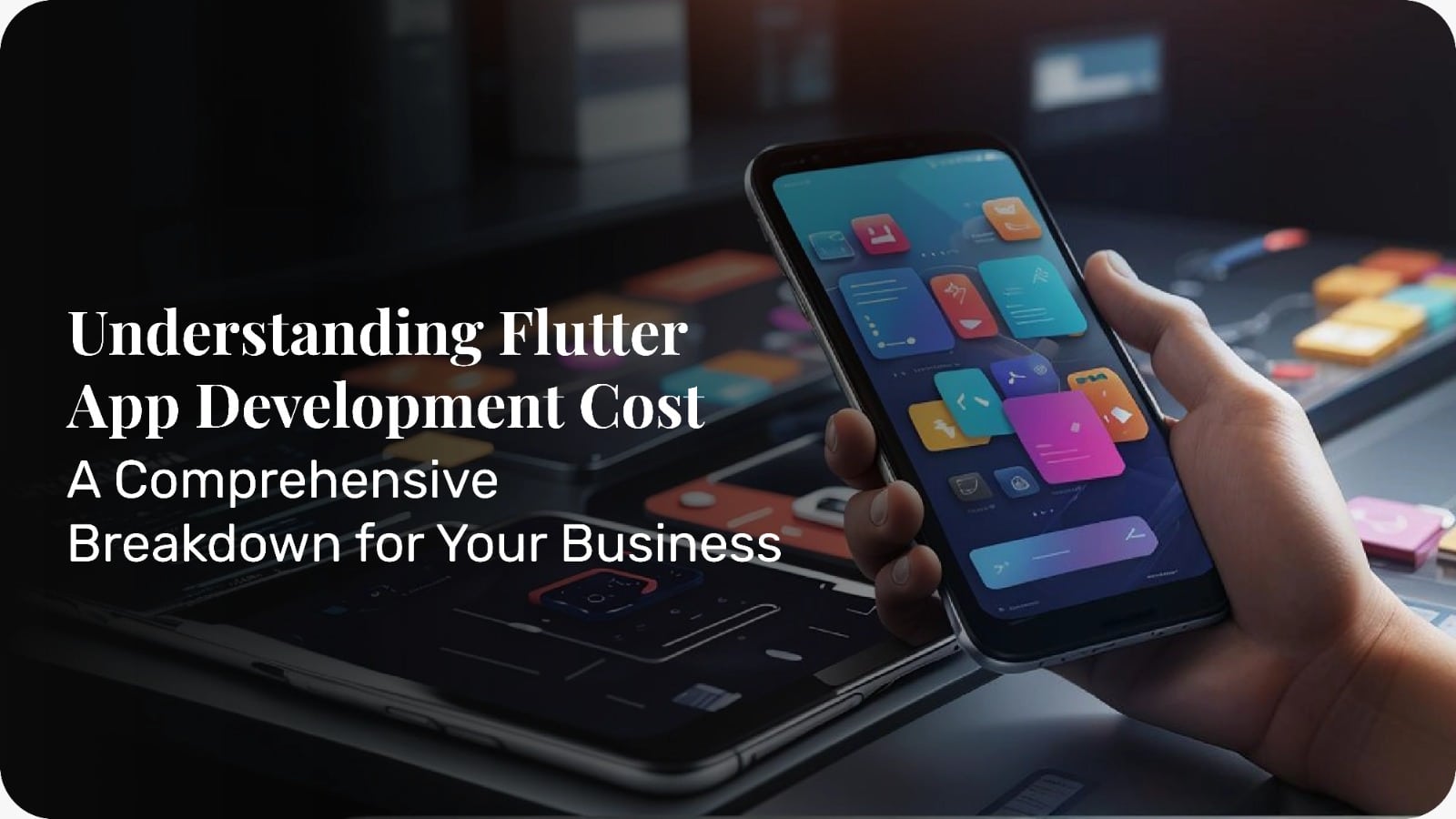
Top Check Cashing Apps That Don’t Use Ingo in 2026
Looking for an app where you can find a mobile check deposit with instant funds availability?. Explore the best check cashing apps in 2025.
Continue Reading
For businesses that are looking to develop a high-quality, mobile application that has many features without draining their resources, the development framework used can make a significant difference in the overall budget. Flutter, an open-source mobile application development framework created by Google, has quickly become a popular choice for businesses that want to create visually stunning and highly functional apps. But what exactly is Flutter, and how does it influence the app development budget?
In this article, we’ll go into the details of Flutter app development costs, exploring the factors that affect overall pricing, and how it compares to other app development frameworks. Whether you’re a startup, an established business, or an enterprise, by the end of this article, you’ll have a clearer picture of how Flutter can fit into your app development strategy and budget.
Before we dive into the costs, it’s essential to understand the core principles of Flutter app development. At its core, Flutter is an open-source framework developed by Google that enables developers to build high-performance, natively compiled applications from a single codebase. It supports the creation of applications for multiple platforms, including mobile (iOS and Android), web, and desktop, all from one unified codebase.
This cross-platform functionality is one of Flutter’s key strengths. By using a single codebase, businesses can avoid the complexities and costs of developing separate applications for iOS and Android, significantly reducing both time and resources required. Flutter applications are compiled directly to native code, which means they can offer native-like performance and functionality without the additional costs associated with traditional hybrid apps.
Flutter uses the Dart programming language, which is specifically designed for building fast and efficient applications. Dart is optimized for high-performance apps, ensuring that Flutter apps maintain a smooth user experience even when handling demanding tasks or complex features. Additionally, Flutter provides a rich set of pre-designed widgets that simplify UI design, enabling developers to create visually attractive, responsive, and user-friendly interfaces. Whether you are building a small-scale mobile app or a large-scale enterprise solution, Flutter’s flexibility makes it an ideal choice for businesses looking to stay competitive in today’s highly competitive app market.
Let DigiTrends help you streamline your process and maximize your ROI.
Get Your Free Cost Estimate Today!
If you’re considering whether to use Flutter for your next app development project, here are several reasons to convince you on why it may be the right choice for your business. Here are some of the key advantages that make Flutter an attractive option:
One of the most notable benefits of Flutter is its ability to create apps for both iOS and Android platforms using a single codebase. This eliminates the need for separate development teams for each platform, which is often one of the most significant factors that increase cost in app development. Maintaining two codebases for iOS and Android not only increases development time but also demands higher resource investment for updates, bug fixes, and ongoing support.
With Flutter, businesses can streamline the development process by building one application that works seamlessly across both platforms, making it a cost-effective solution for businesses that want to reach a wide audience without the burden of managing separate codebases.
The ability to work with a single codebase also contributes to faster development cycles. Flutter’s “hot reload” feature allows developers to instantly see the effects of changes in real-time, speeding up the whole process. This feature is particularly helpful during the testing phase, as developers can edit the user interface or fix bugs without needing to restart the app, making adjustments faster and more efficiently.
This results in quicker delivery of the app, allowing businesses to launch their product faster and begin getting returns. The reduced development timeline also translates to lower costs, as developers spend less time on building and testing the app.
Despite being a cross-platform framework, Flutter ensures high performance for mobile apps. Unlike hybrid frameworks, which often rely on web views and can suffer from slow performance and often lag, Flutter compiles directly to native ARM code for both iOS and Android. This means that Flutter apps have near-native performance and responsiveness, which is particularly crucial for apps that require smooth animations, real-time data processing, or intense computation.
For businesses that demand high performance in their apps—such as games, financial apps, or enterprise solutions—Flutter can deliver the speed and reliability of native apps without the increased cost of maintaining separate native codebases.
The reduced need for separate codebases, faster development cycles, and high performance all contribute to Flutter’s cost-effectiveness. Since businesses only need to hire a single team of developers, the cost of labor is typically lower than if separate teams were required for iOS and Android development. Additionally, with Flutter, businesses can manage their resources more effectively, ensuring that they get the most value for their development budget.
This is particularly beneficial for startups, small businesses, and entrepreneurs who may have limited budgets but still need a high-quality app to compete in the market.
Flutter provides developers with a rich library of customizable widgets, which makes it easier to create a wide variety of beautiful and responsive user interfaces. Whether you’re building a simple informational app or a complex e-commerce platform, Flutter’s UI toolkit gives developers the tools they need to create visually appealing applications. Flutter also supports custom animations, transitions, and interactive features, making it a great option for apps that need a high level of visual effects.
Because of its flexibility and ease of customization, Flutter allows businesses to create distinctive and engaging user experiences that can help them stand out in a crowded market.
Flutter is backed by Google, which means it benefits from continuous updates, improvements, and extensive documentation. In addition, the growing global community of Flutter developers contributes regularly to the framework, ensuring that it stays relevant and up-to-date with the latest trends and technologies. This active community offers a wealth of resources, tutorials, and third-party libraries, which can accelerate the development process and help developers overcome any challenges they may face.
For businesses, this means there is plenty of support and resources available to help ensure the success of their Flutter app development projects.
Let DigiTrends experts tailor a solution that fits your budget.
Request Your Custom Quote Now!
Understanding the potential costs associated with Flutter application development is crucial when planning your app project. Although pricing can vary depending on several factors—such as the complexity of the app, the resources required, and the location of the development team—below is a general breakdown of what businesses can expect to pay for different types of Flutter mobile app development projects.
Basic apps typically include simple functionality and limited features, such as informational apps or apps with a few screens. These apps are relatively quick to develop and require fewer resources. For a basic Flutter app, the cost generally ranges between $5,000 to $15,000. This price includes minimal design elements and simple features such as static pages, basic navigation, and limited interaction.
These types of apps are usually suited for small businesses or startups that need an affordable app solution to establish their online presence or communicate with customers.
Apps that require more advanced features, such as user authentication, backend server integration, API calls, and basic data management, will have a higher price point. For a medium-complexity Flutter app, businesses can expect costs ranging from $15,000 to $25,000. This range typically covers apps with moderate to advanced functionality, such as content management systems, small-scale e-commerce apps, or social networking platforms.
The increased cost reflects the additional time and resources required for backend development, API integrations, and thorough testing to ensure the app functions correctly across all platforms.
For businesses looking to build highly complex applications—such as real-time communication platforms, large-scale e-commerce stores, or apps that require sophisticated customizations and integrations—Flutter app development costs can range from upwards of $25,000 to more. These projects usually require a team of developers working for several months to implement advanced features, robust back-end systems, and custom-designed UI components.
Highly complex apps often require custom animations, real-time data synchronization, integration with third-party services (e.g., payment gateways, CRM systems), and thorough quality assurance testing. The price tag reflects both the time and expertise needed to develop and maintain such applications.
The cost of maintaining and updating a Flutter app is an ongoing concern for businesses, as it ensures that the app remains functional, secure, and competitive in a fast-evolving tech landscape. Maintenance costs depend on the complexity of the app and the frequency of updates.
Ongoing maintenance includes bug fixes, security patches, performance optimizations, and the addition of new features. It is essential to plan for these costs when budgeting for a Flutter app, as they are crucial for ensuring long-term success and user satisfaction.
While the basic price ranges above provide a general idea of what to expect, several factors can further influence the overall cost of Flutter application development. Below are some key elements that businesses should consider when planning their budget:
The more complicated the design, the higher the development cost. Custom designed UI elements, animations, and interactive features can significantly increase the price of app development. If you require a unique, high-end design that stands out from competitors, be prepared for a higher upfront investment.
Additional features such as push notifications, geolocation, payment processing, real-time messaging, and complex API integrations all contribute to the overall cost. The more complex the app’s functionality, the more time and resources developers will need to allocate to ensure a seamless user experience.
Developer rates vary significantly by location. Developers in North America and Western Europe typically charge higher rates than those in Eastern Europe or Asia. While outsourcing to regions with lower labor costs can save money, it’s important to balance cost with the need for quality and clear communication.
Many apps rely on third-party services for features such as payment gateways, cloud storage, or analytics. These integrations can increase both development time and cost, especially if custom work is required to ensure compatibility.
Comprehensive testing is critical for ensuring that the app works across a wide range of devices and operating system versions. The complexity of the app directly influences the amount of testing required, which can drive up the cost.

In conclusion, Flutter mobile app development offers businesses a highly flexible and cost-effective solution for building high-quality, cross-platform mobile applications. Whether you’re building a basic app or a more complex enterprise solution, Flutter’s ability to reduce development time and costs while maintaining high performance makes it an excellent choice for businesses looking to create robust mobile apps on a budget.
By understanding the various factors that influence Flutter app development costs—including app complexity, design, features, and the developer team’s expertise—you can better plan and budget for your app project. With the right development team and a clear vision of your app’s goals, Flutter can help bring your ideas to life without breaking the bank.
As businesses continue to embrace Flutter’s capabilities, it’s clear that this framework is not only here to stay but will likely become a standard choice for businesses looking to stay competitive in the mobile app market.
Partner with DigiTrends to turn your vision into a high-performance Flutter app.
Start Your Project Today!